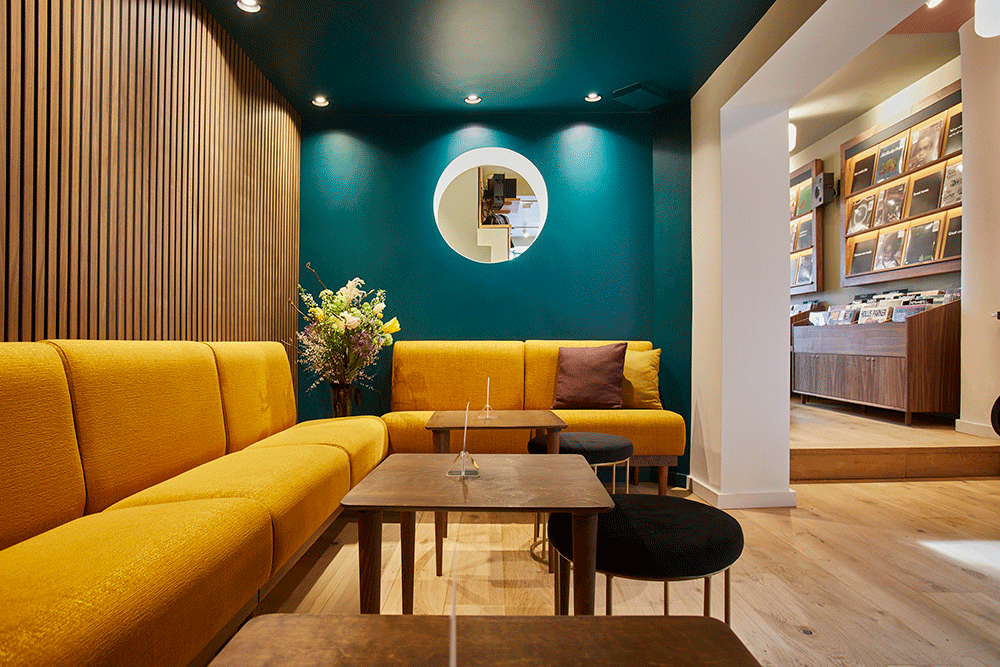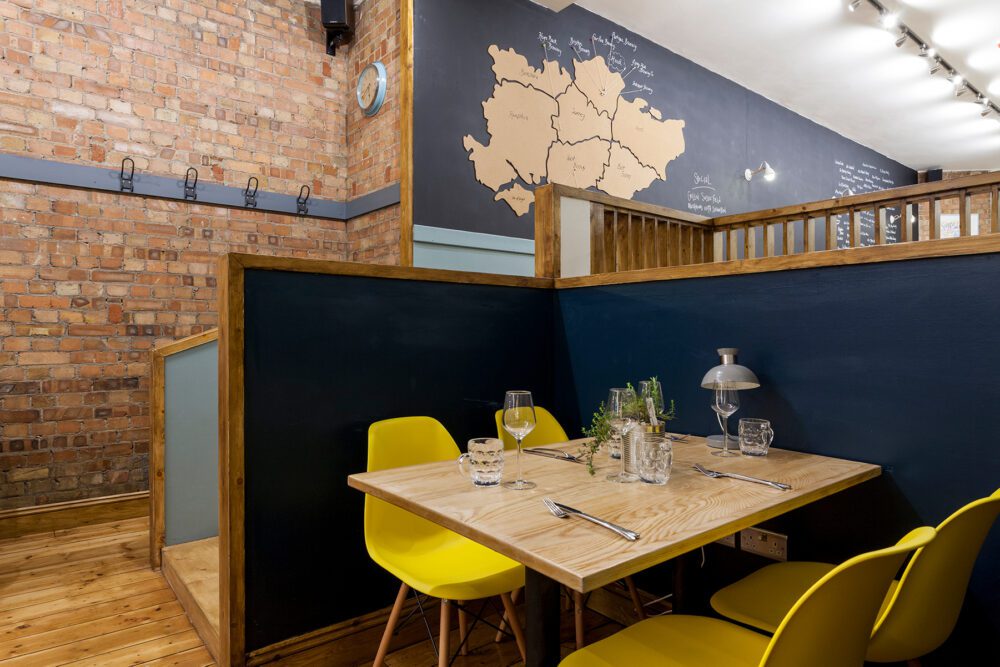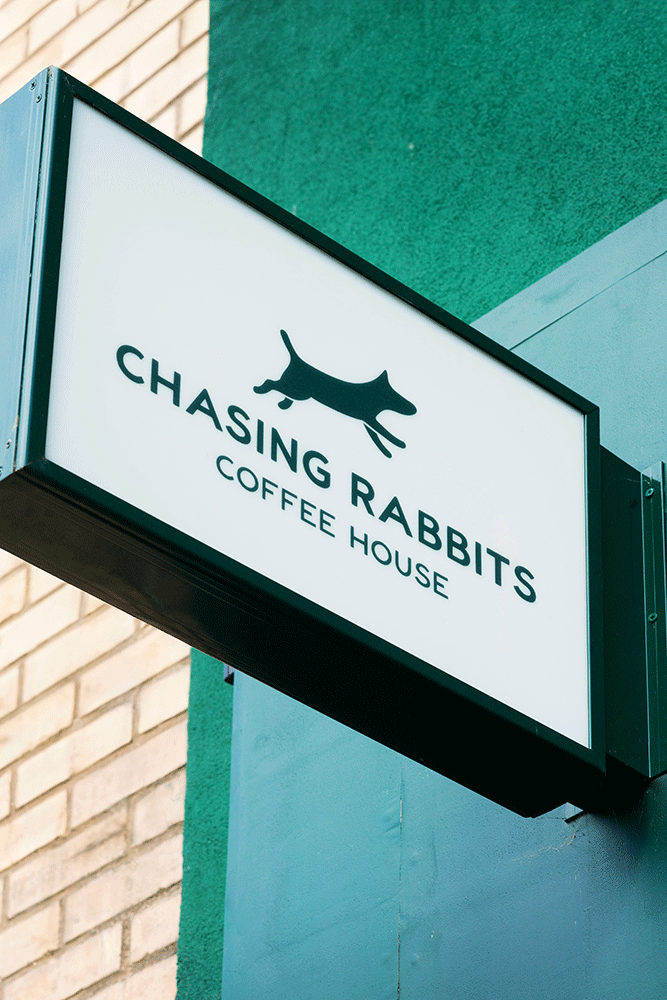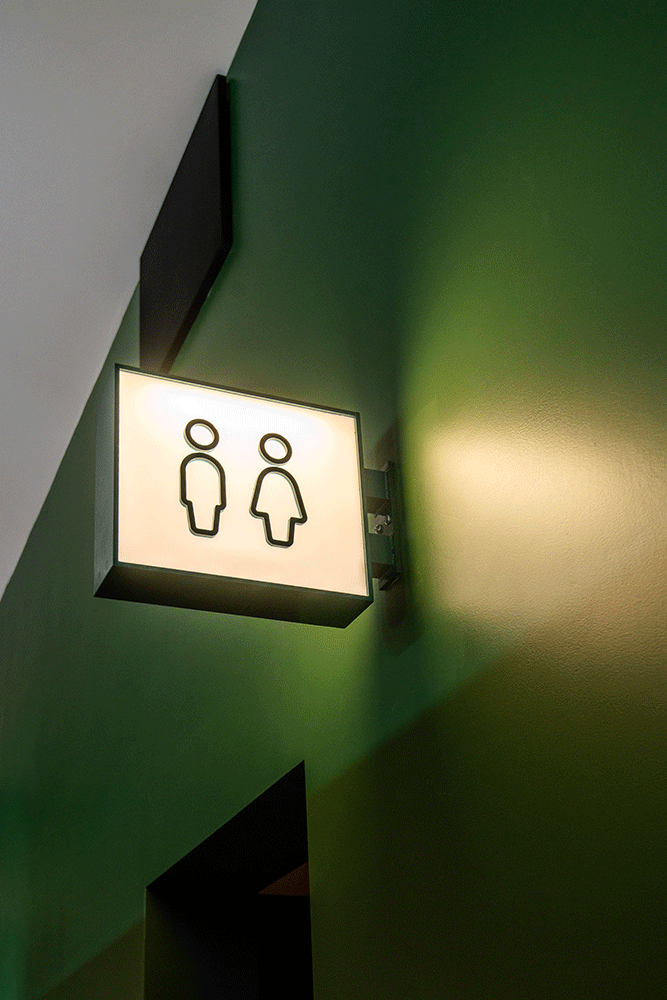We believe inclusive design is the future of retail and hospitality. It’s about more than just legal compliance; it’s about creating an atmosphere where every customer feels welcome, safe, and valued. The principles of light, colour, and contrast can be vital in commercial spaces, particularly for customers with low vision conditions like macular degeneration (MD). By designing with care, we can enhance the customer journey for all, transforming a simple trip into a truly engaging experience.
Here’s how we apply our design ethos to commercial settings:
1. Guiding with Light
Lighting sets the mood, but in a retail or restaurant environment, it’s also a powerful tool for navigation and safety. For those with low vision, controlling glare and creating consistent illumination is paramount.
- Layered and task-specific lighting: Use a combination of ambient light for general areas and focused, anti-glare task lighting for specific points of interest. In a shop, this means bright, even light on displays. In a restaurant, it means focused table lighting that allows customers to clearly see their food and menu without being blinded by a harsh, central fixture.
- Control over natural light: Use blinds or diffusers on large windows to manage direct sunlight, which can cause painful glare and distracting shadows.
- Avoid visual clutter: Be mindful of reflective surfaces that can create confusing light patterns and cause visual distress for people with MD. Opt for matte finishes where possible.

2. The Power of Contrast and Clarity
Clarity helps reduce anxiety for customers with low vision and enables them to navigate the space independently. High-contrast colour schemes are one of the most effective ways to achieve this.
- Flooring: Use contrasting flooring to define different areas, such as the transition from a waiting area to the main dining space. If possible, avoid busy, high-contrast patterns on the floor that can be confusing or disorienting.
- Key features: Use bold, high-contrast colours to highlight potential hazards and points of interest. This includes the edges of steps, the entrance to a toilet facility, or the counter in a shop.
- Product displays: In a retail environment, use contrasting colours or lighting to help products stand out from their shelving. This makes it easier for customers to browse and locate what they need.

3. Strategic Signage and Layout
Clear and simple communication is key in commercial spaces, and it all starts with the layout and signage.
- Accessible signage: Use large, clear fonts (minimum 48-point) with excellent contrast. Dark text on a light background is often preferred, but the most important thing is high visibility. Signage should be placed consistently at eye-level and free from “visual clutter”.
- Open and clear pathways: Ensure walkways are wide, well-lit, and free from obstructions like stray boxes or excess furniture. In restaurants, allow enough space between tables for easy movement.
- Accessibility for all: Consider offering menus in alternative formats such as large print or compatible with screen readers. This provides a dignified way for customers to engage with your products and services.



4. The Human Touch
Accessibility goes beyond the physical environment. For our clients in hospitality and retail, we emphasise the importance of staff training. A thoughtful human interaction can overcome many design shortcomings and make a lasting, positive impression.
- Proactive service: Train staff to introduce themselves to customers with visual impairments and ask if they need assistance with navigating the space or reading a menu.
- Thoughtful communication: For diners with low vision, confirm where their food, drinks, and condiments are being placed on the table. This small act of consideration significantly improves the dining experience.
If you are creating an interior space with an older demographic in mind and would like to discuss ways of approaching this rather interesting area of design then feel free to get in touch.
If you have a new diagnosis for anything low vision related here are also local groups that can offer support and advice. In Sussex we have East Sussex Vision Support who can advise you on how to stay independent and make the most of what is available to you.